Spine
- Anatomy
- Conditions
- Procedures
Spine Anatomy
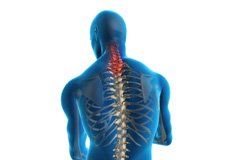
Cervical Spine Anatomy
The spine, also called the back bone, plays a vital role in stability, smooth movement and protection of the delicate spinal cord. It is made up of bony segments called vertebrae with fibrous tissue called intervertebral discs between them. The vertebrae and discs form the spinal column from the head to the pelvis, giving symmetry and support to the body.
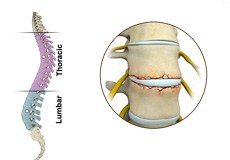
Thoracic Spine Anatomy
Thoracic spine is the central part of the spine, also called as dorsal spine, which runs from the base of the neck to the bottom of your rib cage. The thoracic spine provides flexibility that holds the body upright and protects the organs of the chest.
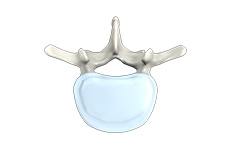
Lumbar Spine Anatomy
The spine, also called the back bone, plays a vital role in stability, smooth movement and protection of the delicate spinal cord. It is made up of bony segments called vertebra with fibrous tissue called intervertebral discs between them. The vertebra and discs form the spinal column from the head to the pelvis, giving symmetry and support to the body.

Back Pain
Back pain or backache is the pain felt in the back that may originate from muscles, nerves, bones, joints or other structures in the spine. Back pain is one of the most common medical problems experienced by most people at some time in their life. It can be acute, usually lasting from a few days to a few weeks, or chronic pain, lasting for more than three months.
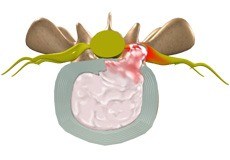
Disc Herniation
Disc herniation is the most common cause of back pain. The intervertebral discs are flat and round, present between vertebrae and act as shock absorbers when you walk or run. There is a soft, gelatinous material in the center (nucleus pulposus) which is encased in strong elastic tissue forming a ring around it called annulus fibrosus.
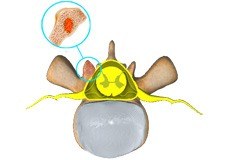
Spinal Tumors
Spine tumor is the abnormal growths of uncontrolled tissues or cells in and around the spinal cord. Tumors can either be cancerous (malignant) or non-cancerous (benign). Some of the commonly occurring benign spinal tumors are osteoma, osteoblastoma, hemangioma, and osteochondroma.
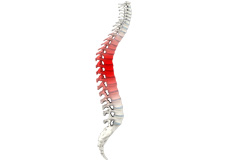
Spine Trauma
Spine trauma is damage to the spine caused from a sudden traumatic injury caused by an accidental fall or any other physical injury. Spinal injuries may occur while playing, performing normal activities, operating heavy machines, lifting heavy objects, driving automobiles, or when you suffer a fall.
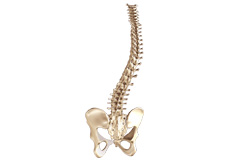
Spine Deformities
The Spine or backbone provides stability to the upper part of our body. It helps to hold the body upright. It consists of a series of irregularly shaped bones appearing in a straight line. The spine has two gentle curves, when looked from the side and appears to be straight when viewed from the front.

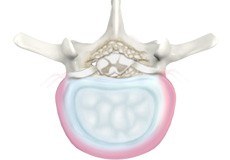
Degenerative Disc Disease
The intervertebral disc is composed of an inflexible ring called the annulus fibrosis which encloses a gelatinous inner structure called the nucleus pulposus. The discs are kept in position with the help of endplates between two vertebral bodies. The intervertebral discs act as shock absorbers.

Scoliosis
Scoliosis is a condition characterized by abnormal curvature of the spine causing a deviation to one side. It causes a physical deformity making the spine look like the letter “C” or “S” instead of the letter “I”. Scoliosis can affect either the mid or the lower back, but the scoliosis of the mid back is more common. Scoliosis can occur at any age.
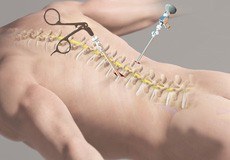
Minimally Invasive Spinal Surgery
MISS is the latest advanced technology available to perform spinal surgeries through small, less than one inch long, incisions. It involves the use of special surgical instruments, devices and advanced imaging techniques to visualize and perform the surgery through such small incisions.

Robotic Spine Surgery
Robotic Assisted Spine Surgery is a minimally invasive spine surgery where the surgeon is assisted by a robotic system (Da Vinci surgical system) to perform the surgery. Robotic systems are becoming increasingly popular in the medical fraternity owing to the unique advantages including precision, safety and many other advantages.
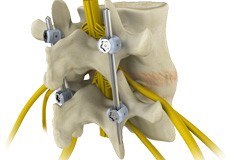
Spinal Fusion
Spinal fusion is the surgical technique of combining two or more vertebrae. Fusion of the vertebrae involves insertion of secondary bone tissue obtained either through auto graft (tissues from the same patient) or allograft (tissues from another person) to augment the bone healing process.
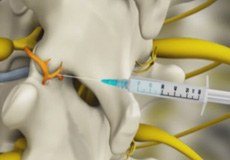
Spinal Injections
Spinal injections are used to inject medications into the painful/injured area of the spine. Spinal injections can be used to diagnose (diagnostic) the cause of pain as well as treat (therapeutic) it. There are different types of spinal injections, often referred to as spinal blocks.
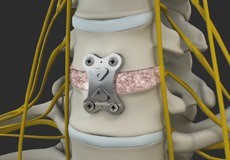
Anterior Cervical Discectomy And Fusion
Anterior cervical discectomy with fusion is an operative procedure to relieve compression or pressure on nerve roots and/or the spinal cord due to a herniated disc or bone spur in the neck.
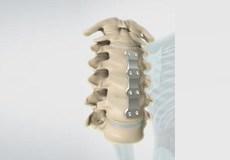
Anterior Cervical Corpectomy And Fusion
The cervical spine comprises the first 7 vertebrae of the spinal column. The vertebrae are separated from one another by shock absorbing pads called intervertebral discs. Over time, the discs can become worn out resulting in neck pain. Most patients with neck pain can be managed conservatively.
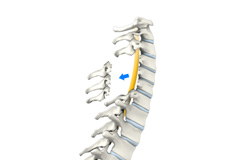
Posterior Cervical Laminectomy
Posterior cervical laminectomy and fusion is a surgical procedure performed to decompress the spinal cord and nerve roots in the cervical region of the spine. Some of the spinal conditions that may compress the spinal cord and nerve roots include disc degeneration, bulging or herniated disc, spinal stenosis, and spondylosis. Nerve compression may result in neck pain and /or arm pain.
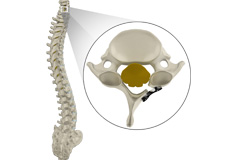
Posterior Cervical Laminoplasty
A cervical laminoplasty is an operative procedure that involves reshaping/repositioning the bone at the neck region (cervical spine) to relieve excess pressure on the spinal nerves. It can also be performed to relieve the symptoms of narrowed spinal canal known as spinal stenosis.
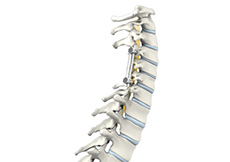
Posterior Cervical Fusion
Posterior cervical fusion (PCF), a surgical procedure performed through the back of the neck, involves joining or fusing two or more damaged cervical vertebrae. The fusion of vertebrae is also known as arthrodesis. Sometimes, metallic plates may be used for fixing the vertebrae, this is also known as instrumentation.

Thoracic Decompression
Thoracic spine decompression is a general term that refers to various surgical procedures intended to relieve pressure off the spinal nerves or spinal cord. These surgical procedures aim to increase the space within the spinal canal or neural foramen where the spinal nerve roots leave the spinal canal.

Thoracic Fusion
Thoracic spine fusion is a surgical procedure in which two or more bones (vertebrae) of the thoracic spine are joined together to eliminate the movement between them. The thoracic spine is the center part of the spine and is formed of 12 vertebrae. Thoracic spine fusion is done by placing bone grafts or bone graft substitutes in between the affected vertebrae.

Posterior Lumbar Decompression (Discectomy/Facetectomy/Laminotomy/Laminectomy/Laminoplasty)
Lumbar decompression is a surgical procedure performed to relieve pressure over the compressed nerves in the lower spine (lumbar region). It is usually indicated in patients with herniated lumbar disc, spinal stenosis, spinal injury or spinal tumors, who have not found adequate pain relief with conservative treatment.

Transforaminal Lumbar Interbody Fusion (TLIF)
Transforaminal lumbar interbody fusion (TLIF) is a type of spinal fusion procedure in which bone graft is placed between the affected vertebrae in the lower back (lumbar) region through an incision on the patient’s back.
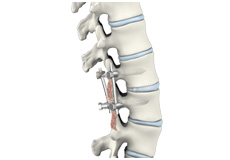
Posterior Lumbar Interbody Fusion (PLIF)
Spinal fusion is a surgical technique used to join two or more vertebrae in the spine and to minimize the pain caused by movement of these vertebrae. In PLIF surgery, several 1-2-inch incisions are made on the back, a series of increasingly larger dilators are used to spread the muscles apart and to provide access to the spine.

Lateral Lumbar Interbody Fusion (XLIF)
The back is made up of a number of small bones called vertebrae. Cushioning discs present between the vertebrae act as shock absorbers. The vertebral column allows the cylindrical bundle of nerve fibers called the spinal cord to pass through the entire column length and branch out to the various parts of the body.

Direct Lateral Interbody Fusion (DLIF)
In this approach, the spine is also approached from the side. Using minimally invasive technique, the underlying soft tissues and the psoas muscle are gently separated to reach the intervertebral disc. As the spine is approached through the psoas muscle, DLIF is also known as trans-psoas approach.

Anterior Lumbar Interbody Fusion (ALIF)
Anterior lumbar interbody fusion (ALIF) is a surgical procedure to correct the spinal problems from the front of the vertebral body by removing disc or other bone material from in between two adjacent lumbar vertebrae. The surgery can be implemented either as an open surgery or minimally invasive techniques.

Oblique Lateral Interbody Fusion (OLIF)
The lumbar spine is made up of 5 bones, arranged one above the other and separated by spongy intervertebral discs that cushion the spine during movement.
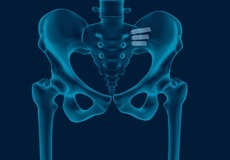
Sacroiliac Joint fusions
The sacrum is a triangle shaped bone found in the base of the spine. The iliac bones are the two large bones that form the pelvis. The sacrum and the iliac bones or ilium are connected together by strong ligaments and the junction where these bones meet is referred to as the sacroiliac joint.

Spino-pelvic Fixation
Coming soon

Occipital Cervical Fusion
Coming soon

Halo Vest Placement
Coming soon
